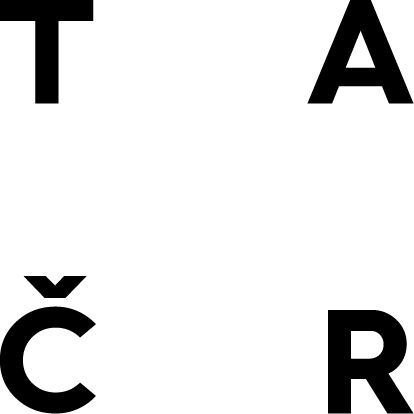
The project received financial support of Technology Agency of the Czech Republic.
The “Specific system of passenger´s check-in and number of transported passengers” methodology is the output of research project no. TB0500MD011, realised under the framework programme of public procurements in research, experimental development and innovations for the needs of public administration “BETA”, Technology Agency of the Czech Republic. The project was executed with financial support of Technology Agency of the Czech Republic.Better use of subsidies of passenger transport is not the only benefit
The methodology shows that the available technologies can be used to efficiently determine passengers assigned to a particular vehicle at a particular time in a particular point on a given route. It could be assumed that when such information is available, the management of the public budget resources allocated for the subsidies of the public transport could improve. In 2015, these resources totalled almost CZK 19 billion, of which CZK 5.1 billion were subsidies of bus passenger transport excluding public transport, and CZK 13.8 billion were subsidies into passenger railway transport. The principal areas of application.- a) Demand for the provision of public service in railway passenger transport in the public interest, i.e. the specification of input parameters for the opening of tenders for transport services, and the determination of other contract elements inducing the increase of the share of public transport on the overall transport demand.
- b) Review and management of existing contracts for the provision of public services, i.e. monitoring real and reported performances or monitoring the ratio of the public transport to overall transport demand.
- c) Bottlenecks inhibiting the reinforcement of the transport infrastructure, i.e. defining the priorities for the strengthening of the transport infrastructure considering not only the occupancy in graphs but also the overall potential of transport demand and its development trend in time.
There are some important precautions for the implementation in future projects.
- a) Projects should be launched sufficiently in advance to generate time series of values for the monitored indicators.
- b) A wide political consensus on the application of the certified methodology in projects should be achieved since the time framework of the projects exceeds the election periods of the Chamber of Deputies and regional and municipal councils.
- c) The contracts for the provision of public transport services concluded between the carrier and the ordering party, both on the national and municipal level, should stipulate the obligation of mutual exchange of machine-processable and freely publishable data about vehicle traffic, data obtained from the check-in systems or the number of tickets sold.
- d) The public administration should enable open-data access to data sources which had been purchased or funded by the state. For the purposes of the methodology, these include for instance data from the toll gates operated by the state based on various tenders since 2007, output of the RODOS project in the form of a comprehensive database of persons and goods mobility in the Czech Republic (realised between 2012 - 2018 with a total amount of eligible costs CZK 212 million), the output of the system for continuous area monitoring of traffic flow dynamics within the Czech Republic’s strategic network of roads (the announcement to open a call for tenders from August 2015, estimated value of CZK 290 million).
- e) To ensure a suitable data format for sharing the existing data about the railway network in coordination with the Railway Infrastructure Administration.
- f) As regards road network, the Ministry of Transport should secure a wide coordination of data formats and records about the road infrastructure given the fact that road networks are administered by various entities (regions, municipalities, Road and Motorway Directorate), resulting in heterogeneous data sources to be processed.
What do the opponents say about the project?
Both opponent reviews agree that the solution presented in the methodology is innovative and yields benefits. At present, the acquisition of data sources could be funded from EU Funds as the expected outcome achieved by means of the projects envisaged by the methodology fulfil the objective of EU policies. To achieve the highest efficiency possible, the public administration needs to maximise synergic effects from existing investments. An example of major synergic effect of the investments into data processing infrastructure could be the exploitation of the capacity of national supercomputing centre.Selection of examples in the methodology was preceded by an analysis of dozens or hundreds of possible scenarios.
The volume of information and data is growing geometrically. We maintain that the key is that the output of the existing projects is understandable both to professionals and the wider public, justifiable and publicly available. The methodology contains several examples which require in particular the knowledge of the dynamics of the transport demand and its individual components. The examples have not been chosen randomly. Their selection was preceded by an analysis of dozens or hundreds of possible scenarios. The qualification criterion for the inclusion in the methodology was their applicability and potential benefits in practice. Clearly interpretable information was selected to facilitate answering particular questions and adopting tailored measures. For instance the knowledge of hourly, daily or monthly elasticity of performed transport demand using the railway and individual passenger car transport enables identifying the group of transport network participants which contributes to the peak, where they are from, what is their transport behaviour and subsequently streamlining group’s behaviour towards sustainable means of transport. It also enables to assess whether the measures adopted fulfilled the expectations. Similarly, in combination with other information, other factors relating to the occupancy of the transport network (weather, public holiday, weeks and days in month, season, etc.) could be identified. Such information can later be used to predict the transport network occupancy and to adopt measures to increase transport fluency and safety and to shorten the time spent commuting.modata-method | Copyright © 2016 VŠB-TU Ostrava. All Rights Reserved. | Contact: miroslav.voznak@vsb.cz
